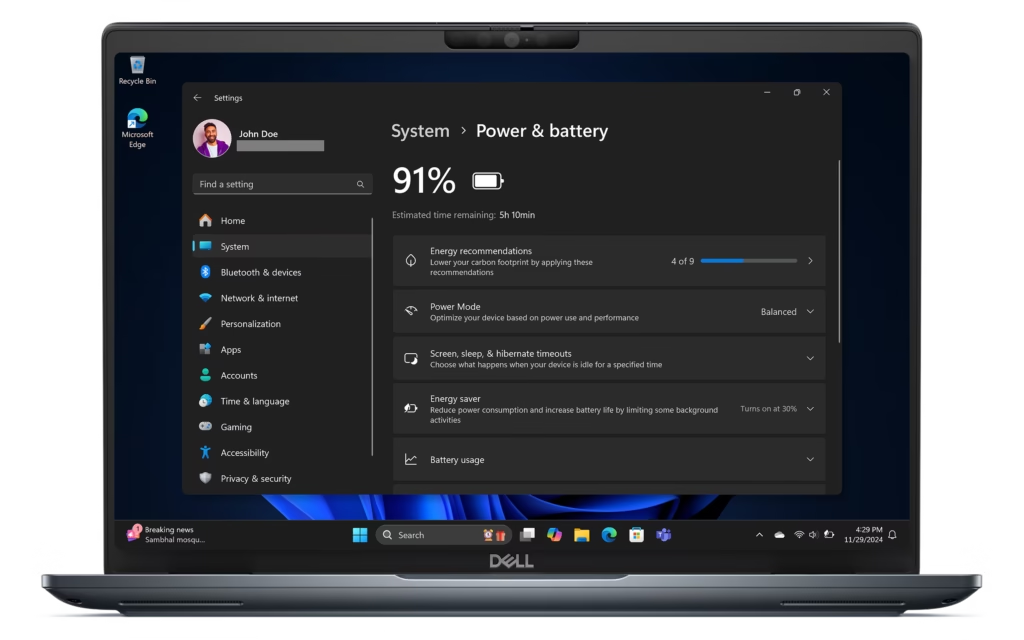How to Check Laptop Battery Performance
Laptops have become an essential part of our daily lives, whether for work, study, or entertainment. However, one of the most critical components of a laptop is its battery, which determines how long you can use your device without needing to plug it in. Over time, battery performance degrades, and knowing how to check your laptop’s battery health can help you maintain its longevity and efficiency. This guide will walk you through the best methods to check your laptop battery performance using built-in tools, third-party applications, and expert insights.
Why Checking Battery Performance is Important

A laptop battery does not last forever. With every charge cycle, its capacity diminishes slightly. If your laptop’s battery health is poor, you may experience:
- Unexpected shutdowns
- Reduced battery life
- Overheating issues
- Poor charging efficiency
By regularly checking your battery’s performance, you can take proactive steps to optimize its lifespan, prevent potential hardware damage, and decide when it’s time for a replacement.
Methods to Check Laptop Battery Performance
1. Using Built-in Windows Battery Report
If you are using a Windows laptop, Microsoft provides a built-in tool to generate a detailed battery report. Here’s how you can access it:
Steps to Generate a Battery Report on Windows
- Press
Win + Xand select Command Prompt (Admin) or Windows Terminal (Admin). - Type the following command and press Enter:
3.powercfg /batteryreport
- The system will generate a report and save it as an HTML file. You’ll find the file location mentioned in the command prompt (typically in
C:\Users\YourUsername\battery-report.html). - Open the file in a web browser to view detailed information about your battery’s health, including:
- Battery usage history
- Charge cycles
- Design capacity vs. Full charge capacity
- Estimated battery life
If your full charge capacity is significantly lower than the design capacity, your battery is aging and may need replacement.
2. Checking Battery Health on macOS
MacBooks have a built-in feature to check battery health easily.
Steps to Check Battery Health on Mac
- Click on the Apple Menu and select System Settings (or System Preferences on older versions).
- Go to Battery and click Battery Health.
- You will see a status such as:
- Normal: The battery is performing well.
- Service Recommended: The battery is significantly degraded and may need replacement.
You can also check the cycle count by clicking About This Mac > System Report > Power. Apple states that MacBook batteries are designed to last around 1,000 charge cycles before significant degradation occurs.
3. Using Third-Party Applications
For a more in-depth analysis, third-party battery monitoring apps provide additional insights.
Recommended Battery Monitoring Tools
- BatteryCare (Windows) – Provides real-time monitoring, temperature insights, and charge cycle tracking.
- HWMonitor (Windows & macOS) – Monitors battery wear level and voltage.
- CoconutBattery (Mac) – Gives detailed battery information, including current capacity and temperature.
These tools can help you track battery health over time and identify any unusual behavior.
4. Checking Battery Wear Level

Battery wear level indicates how much of the original capacity remains. A healthy new battery should have a wear level close to 0%, while an old battery could show 20% or more.
How to Check Battery Wear Level on Windows
- Use
HWiNFOorBatteryInfoViewto check the battery wear percentage. - Compare Full Charge Capacity with Design Capacity to determine wear.
How to Check Battery Wear Level on macOS
- Open CoconutBattery to view the current capacity percentage.
- If the percentage is below 80%, consider replacing the battery.
Tips to Improve Laptop Battery Life

Even if your battery is in good condition, the following best practices can extend its lifespan:
✅ Optimize Charging Habits
- Avoid frequent full discharges (0%) and full charges (100%).
- Keep the battery level between 20% and 80% for optimal health.
- Unplug your laptop when it reaches 100% to prevent overcharging.
✅ Reduce Power Consumption
- Lower screen brightness.
- Use Battery Saver mode on Windows or Low Power Mode on macOS.
- Close unused background applications.
- Disable Wi-Fi and Bluetooth when not in use.
✅ Keep Your Laptop Cool
- Overheating accelerates battery wear.
- Use a cooling pad or elevate your laptop for better airflow.
When to Replace Your Laptop Battery
If your laptop’s battery:
- Drains rapidly (e.g., loses 50% within 30 minutes)
- Struggles to charge properly
- Has a wear level above 30%
- Displays “Service Recommended” (Mac) or similar warnings (Windows)
It might be time for a replacement. Most laptop batteries last 2 to 4 years before significant degradation.
Final Thoughts
Regularly checking your laptop’s battery performance helps you ensure optimal efficiency and longevity. Whether you use built-in tools or third-party applications, monitoring battery health allows you to make informed decisions about maintenance and replacement. By following the best practices for battery care, you can extend its lifespan and get the most out of your laptop.
If your battery is significantly degraded, replacing it is often a more cost-effective solution than dealing with poor performance. Stay proactive, and keep your laptop running smoothly!
Do you have any specific concerns about your laptop battery? Let us know in the comments!



